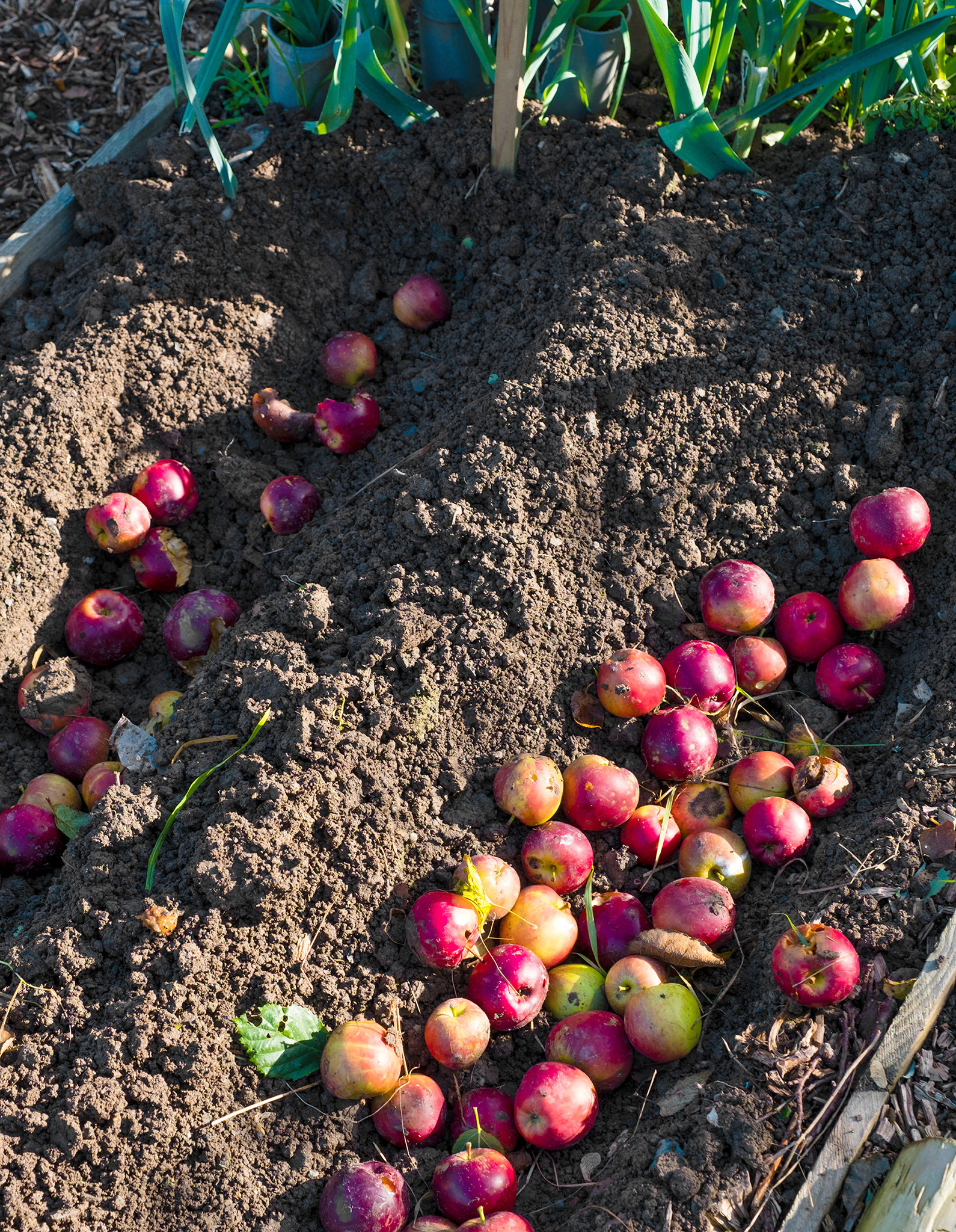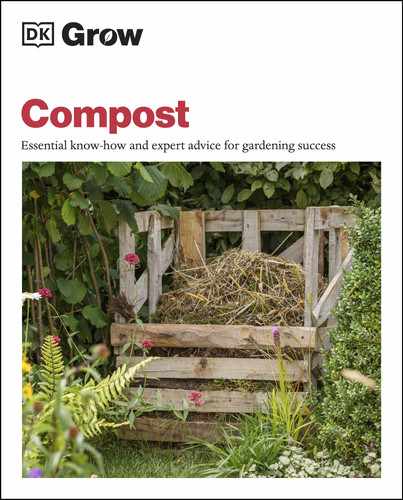Trench composting
Burying nitrogen-rich food and garden waste in the ground is an effective way to recycle nutrients and revitalize infertile plots. You can also use this method to compost meat, fish, and dairy products, if you put them at the bottom of the trench so that the smell does not attract vermin. All you need is a spade and the strength to dig a large hole.
Trench benefits
This form of composting improves the structure of the soil and makes nutrients available to plants’ roots exactly where they are needed, such as in a community garden or in a vegetable garden where you plan to plant hungry crops. Trench composting offers a good way of recycling excess kitchen and garden waste that will not fit into your bin, or you can use it instead of creating a bin or heap if you do not have space for one in a small garden. Filling a long trench with waste is the most common technique, but you can also excavate a number of individual pits if you accumulate waste in smaller batches or have a limited area to plant up.
TOP TIP Use a marker to indicate where you have buried your waste material so that you do not dig it up by mistake when planting.
Creating a trench
The best time for many gardeners to create a trench is in autumn, which allows time for the waste to decompose over winter and early spring and release its nutrients for annual crops or flowers planted later in the year. Trenches made at other times will need to be left fallow for a few months while the buried materials rot down.
Start by digging a trench 18–24in (45–60cm) deep, about the width of two spades, and the length you will need to bury your waste material. Pile up the excavated soil beside the trench. Fill the bottom with about 6in (15cm) of food and leafy garden waste, but do not add perennial weeds. If you removed grass sods to dig your trench, turn it upside down so the roots are facing up, and add these on top. Cover with at least 12–18in (30–45cm) of soil and tamp down with the back of a rake.

Cover your trench with at least 12in (30cm) of soil to ensure good insulation over winter and to disguise the smell.
Wait before planting
The process of decomposition is faster in the ground in winter than it would be in an open heap, especially if you add an insulating mulch over your trench, but the waste will still take a few months to rot, or up to a year in cold, poorly drained soils. Remember to water the trench during prolonged dry spells since the microbes and invertebrates do not function well in arid conditions.
You will notice a slight drop in the soil level over the trench when the materials have decomposed, or if you made a mound over your waste, it will start to level off. At this point, you can plant into the soil with hungry crops such as cabbages, sweet corn, beans, and squashes, or ornamental plants in a flower garden. All will benefit from the nutrients that have been released and the increased worm activity that improves the soil structure.

Plant hungry crops, such as sweet corn, into the enriched soil.

Bruised windfalls can be composted easily in a trench close to the parent tree, but leave a few on the surface for the birds.
